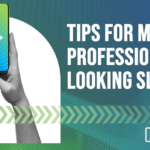Using Writers’ Tricks to Create Better PowerPoint Presentations
We’ve all heard the phrase “content is king.” This old adage is especially true when it comes to developing an impactful and memorable PowerPoint presentation. Your content and how it is organized is the foundation and will determine the success of your presentation.
Surprising as it may be, actual content often gets short shrift, even though it makes up the meat and bones of any slideshow. Sometimes this is simply due to time constraints. Creating PowerPoint presentations often has to wait until your other job responsibilities are fulfilled. But often, authors try to design the content at the same time they are creating it. In the end, you can run out of time and have to settle with “just getting SOMETHING onto your slides.”
The end result is often a “jack of all trades” presentation that has both graphics and content, but falls short in both areas. This does not lead to a better PowerPoint presentation for you or more importantly for your audience.
You can dramatically increase the success of your presentations by using a few basic preparation tricks taken from some of today’s most successful writers.
Planning a Better Presentation
Starting with a set of blank slides can be intimidating. Before even opening your presentation software make a plan.
Brainstorming is one of the most effective tools in the writer’s toolbox. There are many different techniques, but one of the most useful for creating presentations is known as mind mapping, which helps writers visualize the connections between ideas. Start by writing your central theme or topic in the center of a piece of paper and circle it. Then, write down every subtopic and related topic you can think of, including any items that you’ve been told are mandatory to include, radiating out from the central topic like the spokes on a wheel. These might even turn into the titles for each individual slide in the PowerPoint presentation which is why this is such a useful tool for creating slides.
Once you have these ingredients, you need to organize them. Which ones provide background on your topic? Which ones provide specific examples or financial data? Which relate to your recommendations or conclusions? You can use highlighters to color code similar items, which will let you easily transform your mind map into an organized outline. And, that is a fantastic foundation for creating a better presentation.
Tips for Writing Content for Your PowerPoint Presentations
The following writers’ tips can help you write compelling content that will keep your audience engaged:
1. Learn from others. It’s often said that the best way to sharpen your own writing skills is to read constantly. The same is true for PowerPoint. Pay careful attention in meetings where presentations are being given. Note the story structure, as well as the tone and style of the content to learn what works and what doesn’t.
2. Know your audience. The most successful writers are intimately familiar with who reads their work. It might even be useful to make a list of things you know about the audience to whom you will be speaking. Are they management or employees? What are their special concerns? What are they hoping to learn from you? What is the venue? Is it formal or informal? Is humor appropriate?
3. Use anecdotes and real-world examples. An effective slideshow gives life to data and numbers. Look for stories that or even case studies that can help make dry statistics easier to appreciate. It’s even better if your stories can explain WHY the data is important or how it relates to your overall topic.
4. Keep track of ideas. Some of the best content comes when you’re not at the office. While preparing for a major talk, keep a notepad or file on your smartphone for jotting down any inspiration the moment it comes to you.
With an effective plan and a well of ideas to pull from, it should be much easier to write a presentation , as opposed to starting from scratch. And, of course, your audience will thank you for an engaging talk. If you start with strong, well-organized content, you will have a much easier time using PowerPoint’s design tools to enhance and support it.









